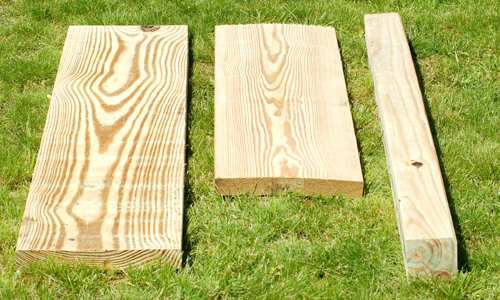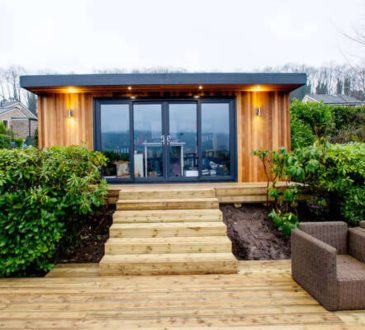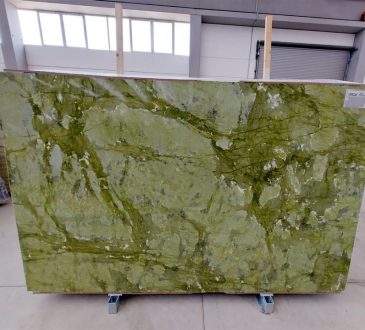
Introduction
Pressure-treated lumber has been a very common and widely used building material for a long time. However, they aren’t usually on your list of building materials when you want to build a fence, even though they can be a durable and cost-effective choice for fence installation. Whether you’re considering garden fencing Leeds or looking for sturdy fences for your property, understanding the benefits of pressure-treated wood can help you make an informed decision about your fencing needs. If you want to make a fence out of pressure-treated lumber, you can hire professionals to do so by searching for a “fencing company near me”. Before that, let’s check out the pros and cons of using pressure-treated lumber for your fence.
Pros:
- Water resistance – Natural wood would soften and soak up moisture in wet conditions. Moisture along with organic matter like wood is the perfect breeding ground for all kinds of bacteria and other microorganisms. They take residence inside the wood and start decomposing it from the inside out.
Pressure-treated lumber helps to avoid this problem. It uses copper-based chemical compounds that protect the wood from moisture and organic damage. That’s why pressure-treated wood can be a favorable material for building a fence and other outdoor structures constantly exposed to moisture.
- Fungal resistance – As mentioned above, a very small amount of moisture is enough for fungal spores to attach themselves to the wood and start growing. The fungal roots invade deep into the wood and start to decompose it. When the wood is weakened it is invaded by other microorganisms and pests.
Pressure-treated lumber is treated with compounds like copper azole and alkaline copper quaternary. These chemicals fight fungal infection and prevent its growth. Apart from that, other compounds are used to protect the wood against insects and other pests. That’s why pressure-treated wood is the perfect fence material.
- Fire resistance – Fire is one of the greatest threats to any sort of wooden structure. With the changing climate and rising global temperature, fire is a frequent threat if you live in a hot and dry region.
Lumber can also be pressure treated to inject fire-retardant chemicals into the wood. This makes the wood highly resistant to fire damage. That brings you peace of mind when you build a fence.
- Insect resistance – If you live in an area where wood is prone to insects and pest damage, then you should consider pressure-treated wood for building your fence. Pesky termites have evolved and developed specialized tools to bore through wood and cause structural instability.
Pressure-treated wood gets injected with copper compounds that are highly efficient in deterring insects. Chemicals like borate and arsenic compounds are also added to warn insects and kill them off if they decide to get a taste.
Even if you don’t use pressure-treated wood for building the whole fence, it can be used for the part that stays below ground. The ground is often moist and rich in biological activity. Pressure-treated wood can also keep regular nuisances like spiders, cockroaches, and ants from building permanent residences.
- Available in all sorts of sizes – Pressure-treated wood is specially made in factories in cylindrical chambers. They come in all sorts of shapes and sizes and can be used in different parts of your home as a building material.
That means you can get small sizes for picket fencing or tall and thick sizes that are more suited for posts and privacy fences.
- Highly durable – Compared to natural untreated wood, pressure-treated wood is far more durable. Due to its chemical treatment, it can survive in all kinds of environments. As mentioned above, with high moisture resistance and deterrence against insects and fungus, it can last you for decades without any problem. The fire resistance is the cherry on top.
- Cost advantage – The upfront cost of pressure-treated wood is higher than natural wood. However, since it has resistance to elements of nature, it is prone to less damage and will require fewer repairs and replacements over the years. When you factor in the long-term benefits, pressure-treated wood can be a cheaper alternative.
Cons:
- Maintenance – While repair costs are low, you have to do maintenance work on your pressure-treated wood fence annually. You need to apply penetrating sealers to prevent the wood from turning soft and porous and to protect it from splintering or fading. Otherwise, your fence will develop plenty of unsightly blemishes and stains that look hideous and may force the local Homeowners’ Association to slap a hefty fine on your property.
- Checking and Splinters – Whether it’s natural wood or pressure-treated wood, you have to conduct regular inspections on your fence. This helps you to identify problems like drying or splitting due to alternate wetting and drying cycles before it’s too late.
Experts recommend that you check and preferably get a professional to inspect your pressure-treated fence annually or bi-annually. That means you can’t afford to be a lazy or thrifty homeowner that delays this routine inspection. Otherwise, hundreds of dollars of investment in your fencing would go to waste.
- Chemical hazard – This is probably the most important reason why people shy away from a pressure-treated wood fence. Pressure-treated lumber goes through rigorous chemical exposure and penetration. These chemicals aren’t just hazardous to pests, but humans and their beloved pets as well.
That means you have to be very careful while using pressure-treated wood. A certain amount of toxins would be released when you trim, cut, or burn this type of wood. You have to maintain strict safety standards and wear protective gear while working with pressure-treated wood.
That’s why manufacturers also advise against using this fence in your garden. It can be a danger to your health if the chemicals come into contact with food and water. Even if you’re an expert DIY homeowner, you should leave the installation of pressure-treated wood to professionals to minimize risks.
Conclusion
Now that you know all about the pros and cons of pressure-treated wood, you can decide if the advantages are worth the risks of building a fence. You can hire professionals to build the fence for you by searching for a “fencing company near me”.




